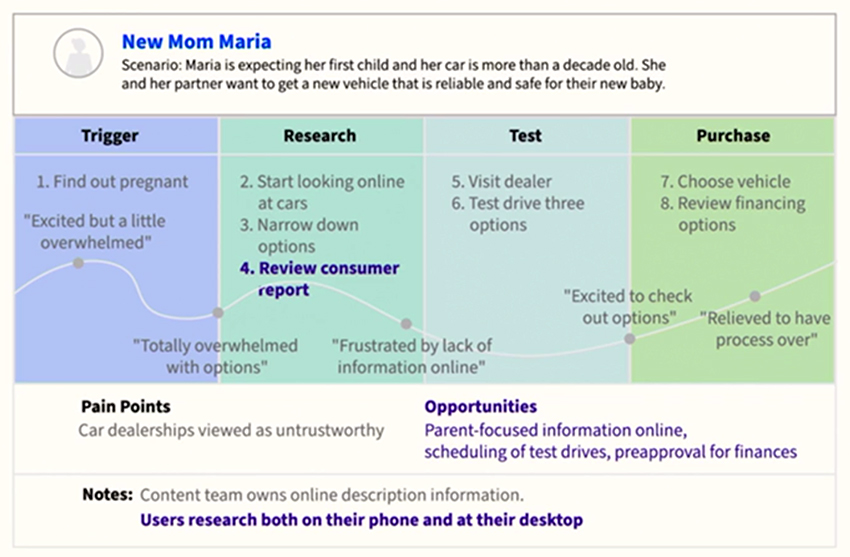Struggling to think about how to effectively iterate your course for 2021? Have you thought about using your SELT scores, and any open text feedback you may have received throughout the semester to create a student learning ‘journey map’?
Inspired by doing observations for an ANU Engineering course in 2019 when I learnt about journey mapping from an engineering perspective, I thought, why not use it in course design too? It’s a great visual tool that can help visualise complex problems, identify the gaps in any of your current learning and teaching practices, and help to create plans for your course.
Please log in to the ANU LinkedIn Learning to access the links in this post.
Using the ANU LinkedIn gateway, watch Amanda Stockwell’s short video – What is and why should I use Mapping as a tool? It provides an excellent overview of why mapping is useful. It’s produced from a user experience perspective known as UX.
Amanda’s certified LinkedIn UX Deep Dive: Mapping learning path outlines the multiple types of maps that UXer’s develop to deep dive into the user experience:
- UX maps: describes the core kinds of UX maps, when to use which map, tips to get started;
- Empathy maps: visual summary of what you know about a group and their perspective to help create personas;
- Journey maps: document someone’s interactions with a product or service based on a wide variety of data and quickly communicates the person’s story; and
- Experience maps visualise the general holistic end-to-end experience or behaviour of intersecting groups based on a variety of research data.
It’s likely that as academics you’ll find empathy and journey maps the most time efficient and useful.


Jenny Simmons, Senior Tutor at ANU in CECS tried the Journey Map process with ENGN1211 Discovering Engineering to see how it could be improved for 2021 from a student perspective. Discovering Engineering is a first year foundational course teaching engineering design process by designing and building a small autonomous vehicle to drive around a maze. The workshops teach students basic technical skills required to wiring and program the vehicle.
Jenny built a persona student, John to help her assess how to make improvements to certain aspects of the course.
Our issue to be addressed was that SELTs and student surveys indicated that many of the students struggled with the workshop content. They felt that the material assumed too much prior knowledge of electronic circuits and basic programming. A course entry survey revealed that up to 60% of the students had little to no experience with computer programming and as many as 70% had little to no experience with building electrical circuits. So our specific journey mapping question was:
How could the workshop material be improved to provide better instructions and resources for the students to bridge their knowledge gaps and increase their confidence in quickly learning new skills?
We thought that the journey mapping approach could be used to show pain points and opportunities to address the needs of these students. We identified seven items for improvement that could equally apply to other courses:
- introducing the workshop topics and aims the week before,
- providing more detail on the worksheets,
- definitions and links to further information at point of introduction for all programming terminology and concepts,
- break-down of task steps including code snippets and clear circuit diagrams included
- More intermediary activities were included
- Tutors were provided with worked solutions with guidance on dealing with common questions and misconceptions
- Drop-in sessions were offered to the students
February 2021
Dr Scott Rickard, is an Educational Designer in the Centre for Learning and Teaching
Jenny Simmons is a senior tutor in the ANU College of Engineering & Computer Science


